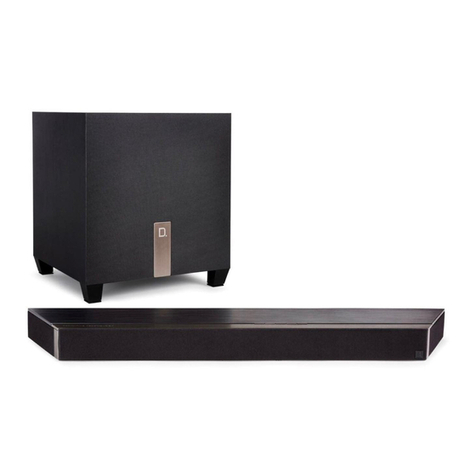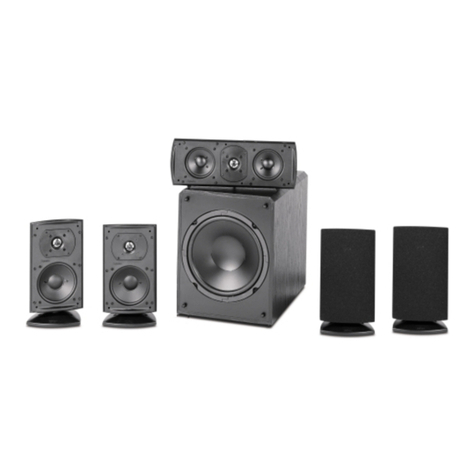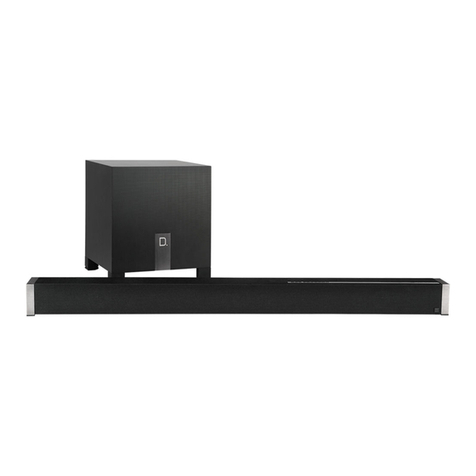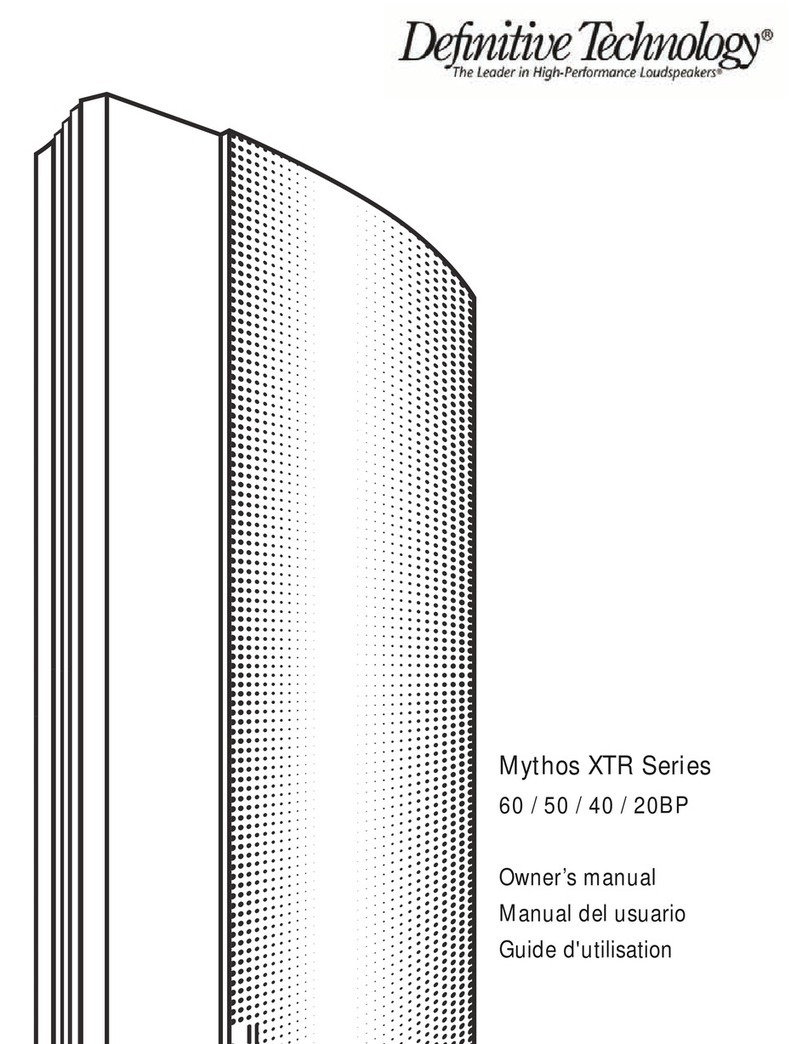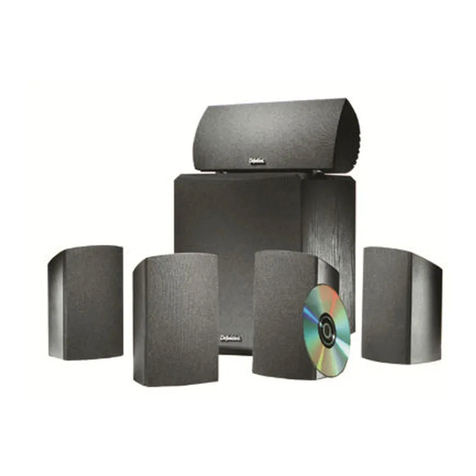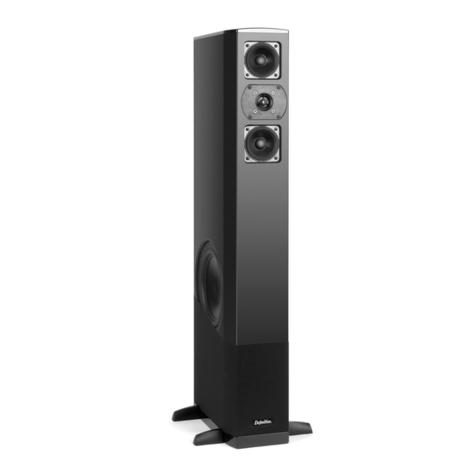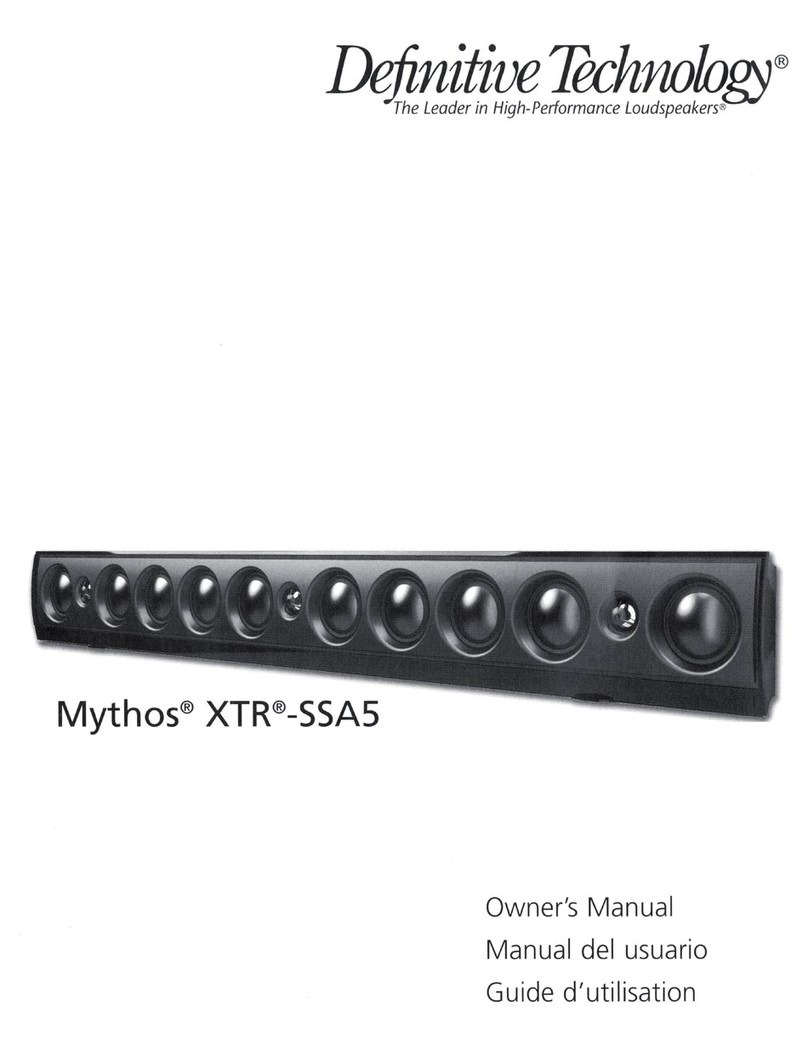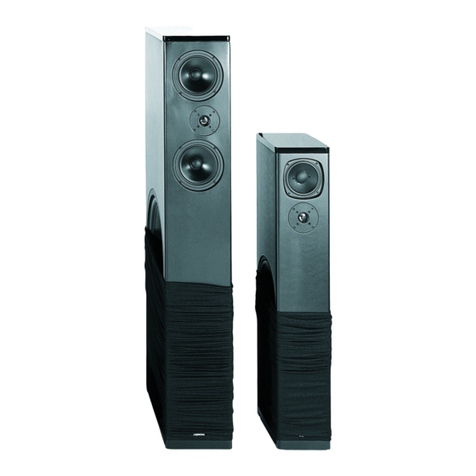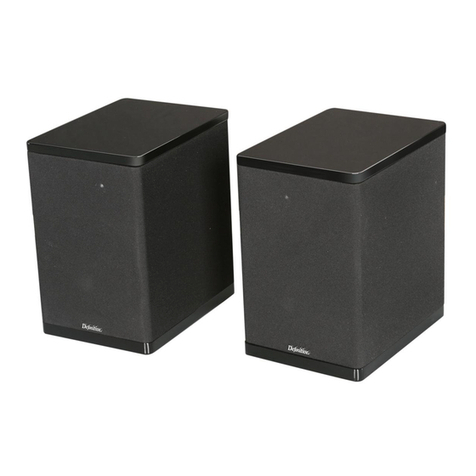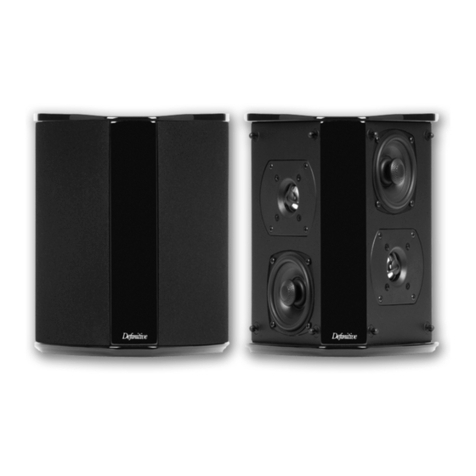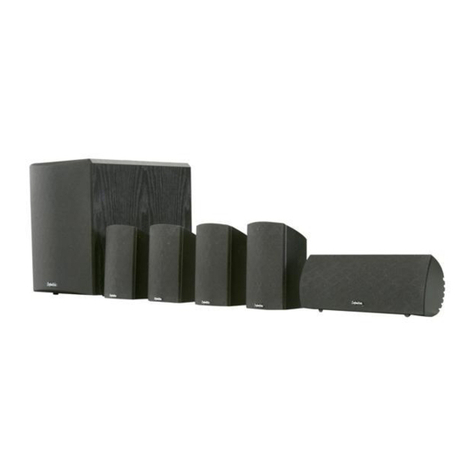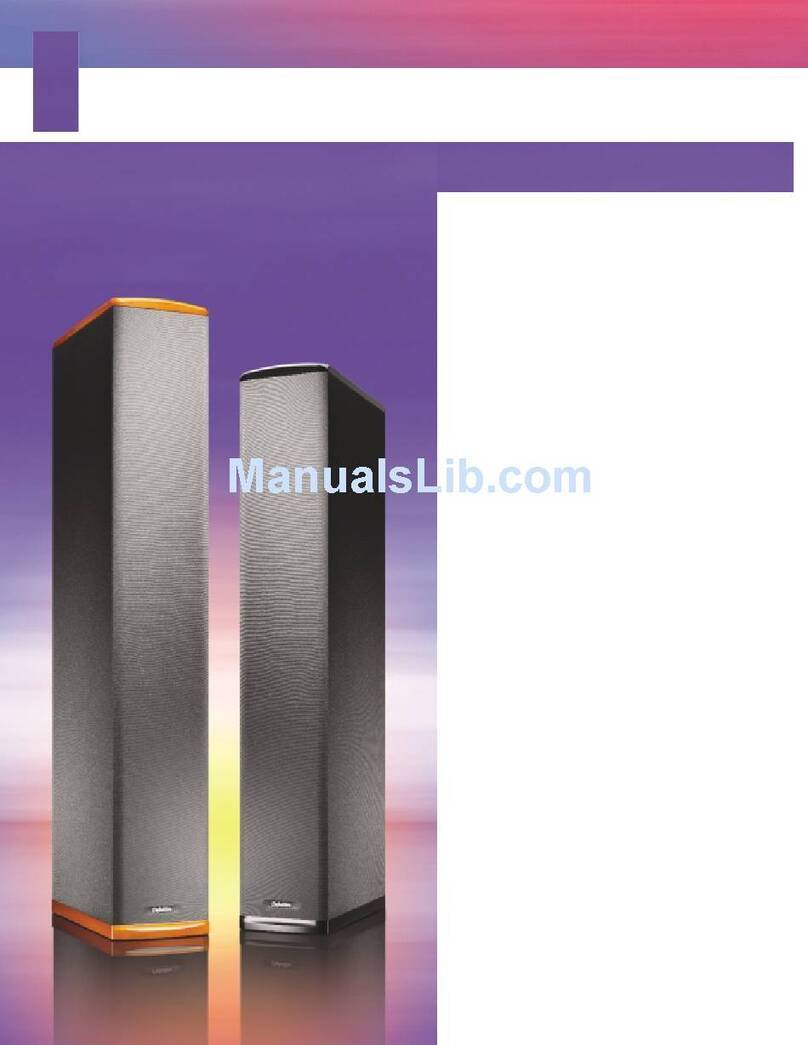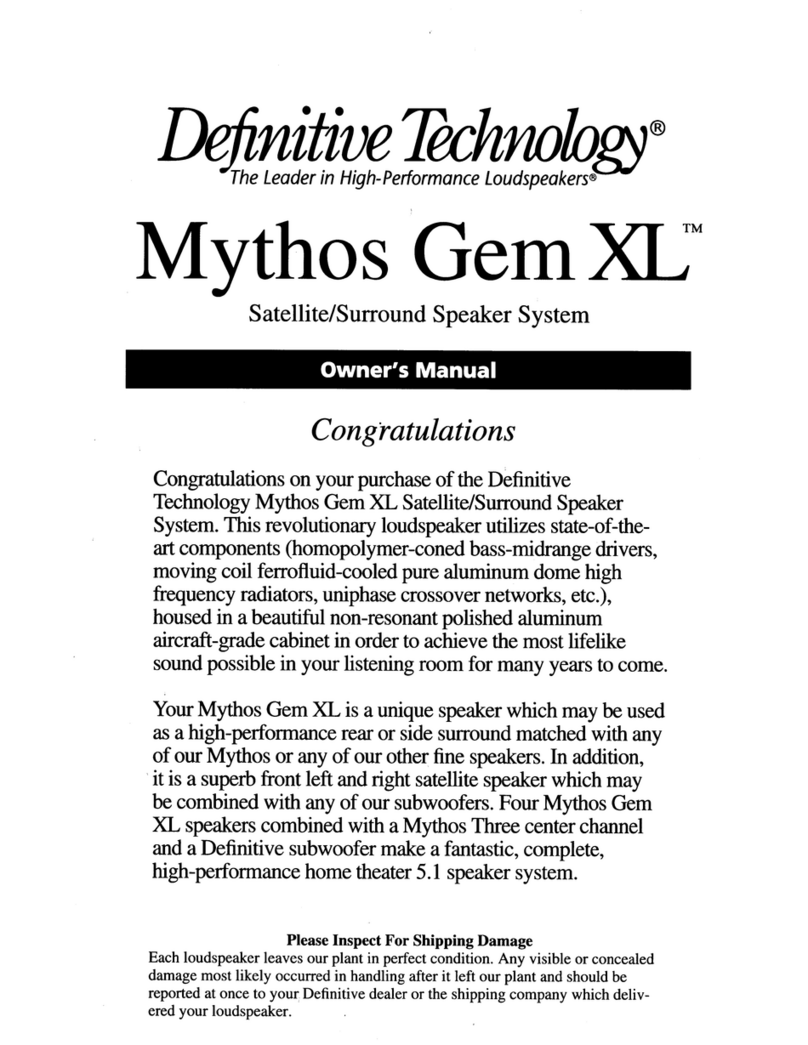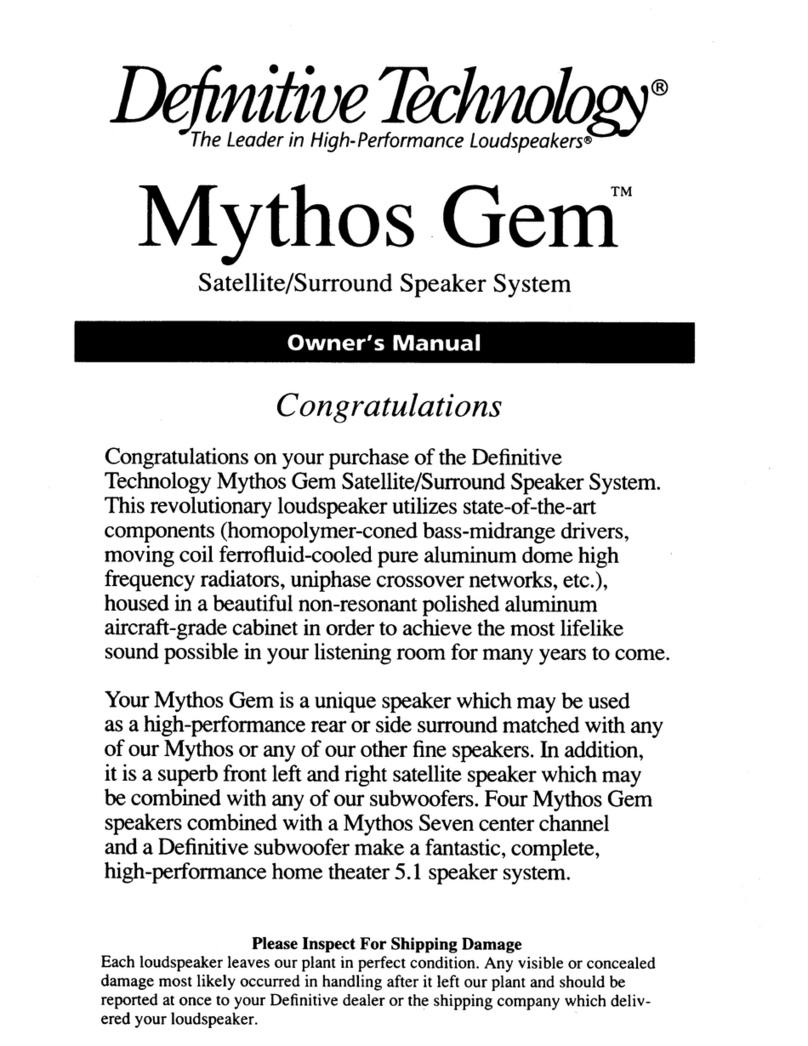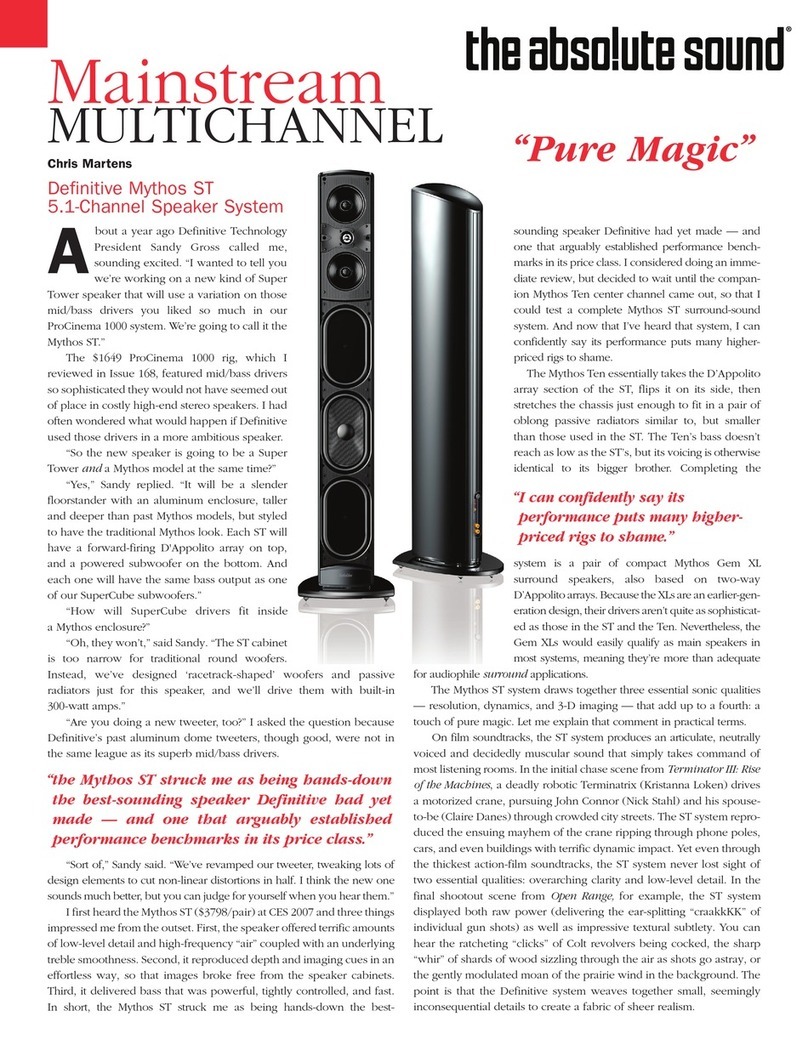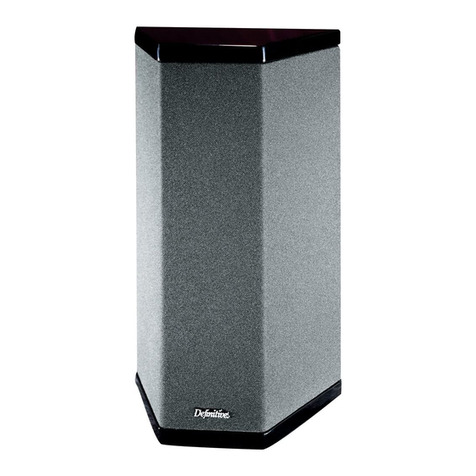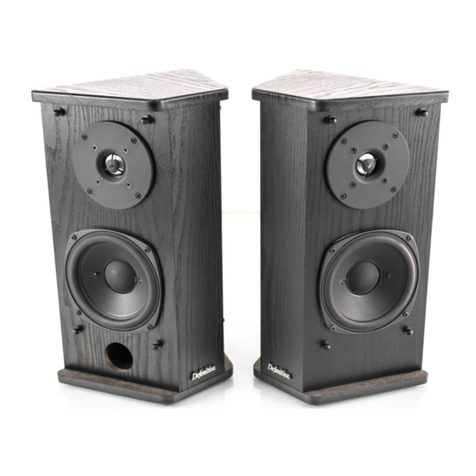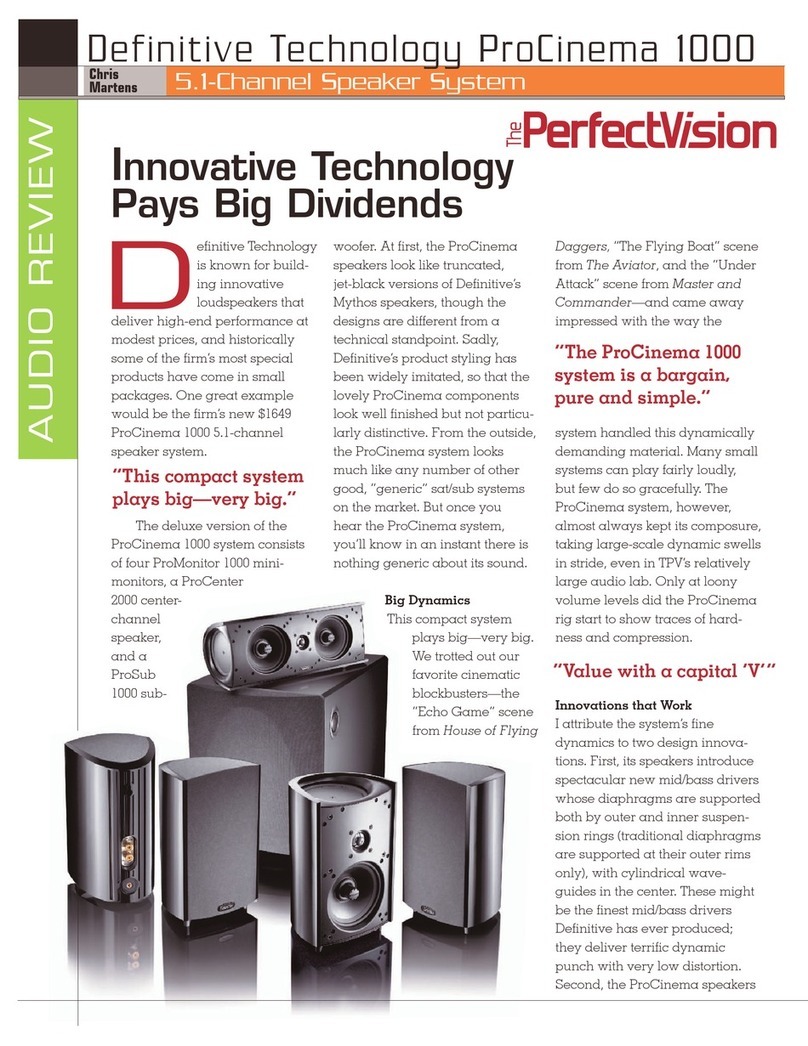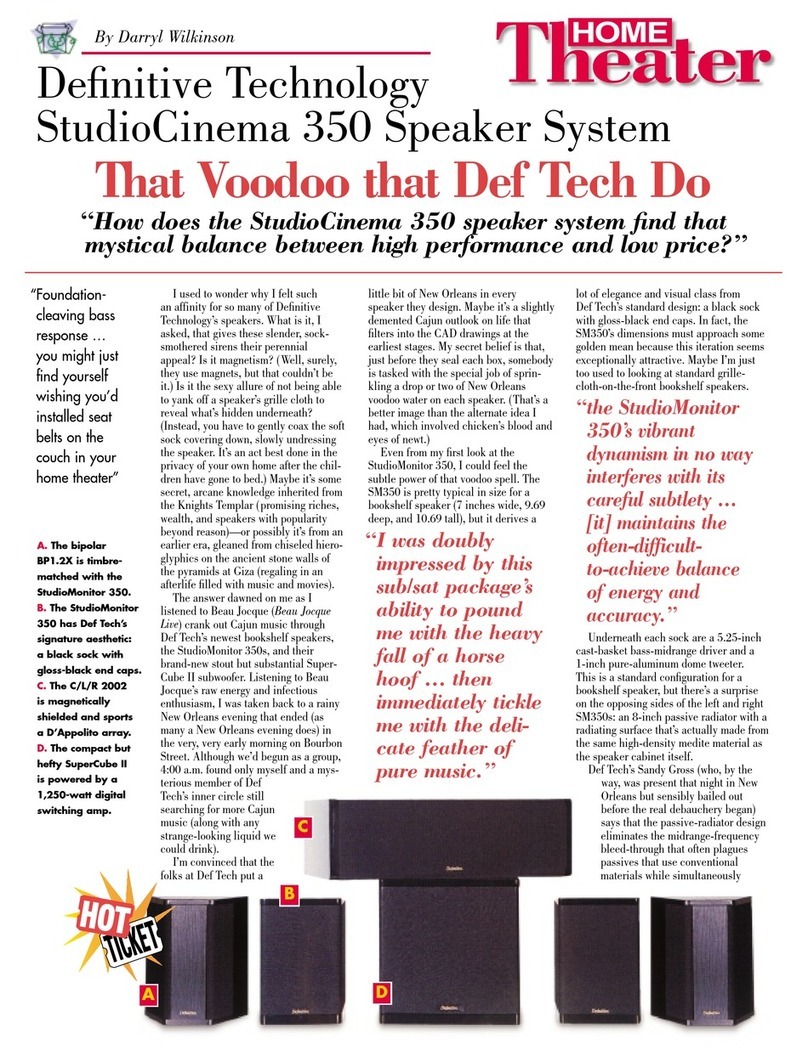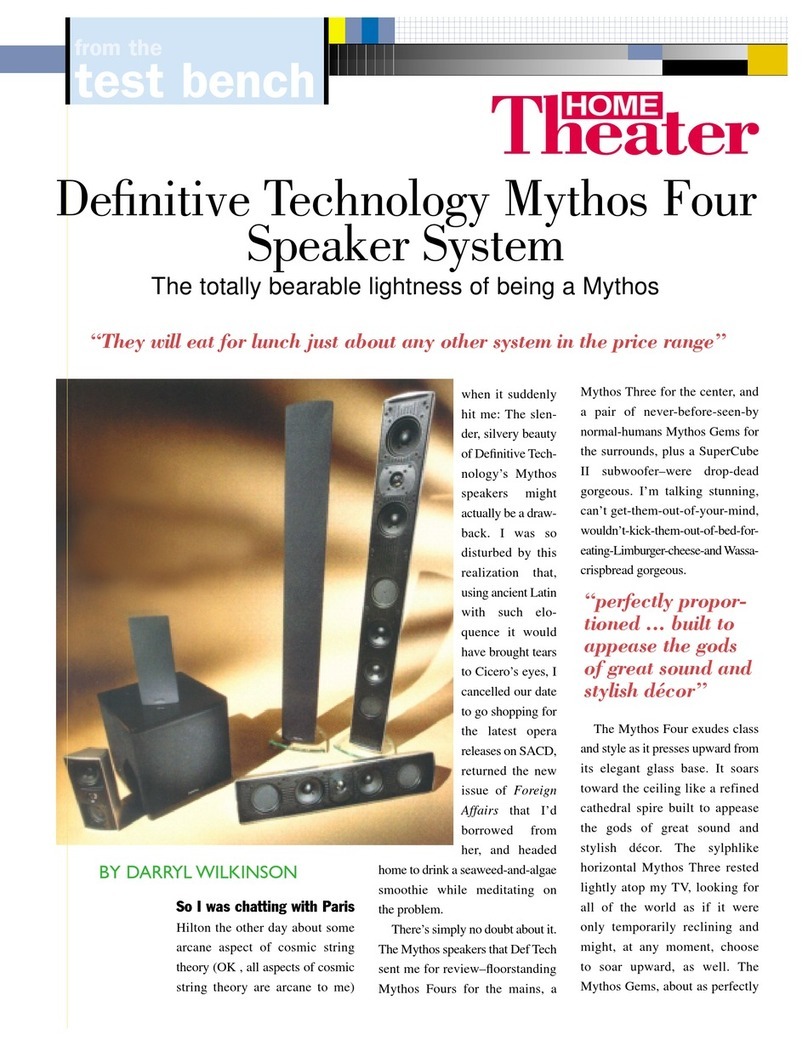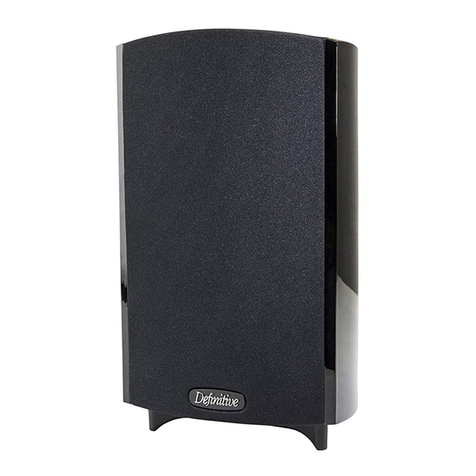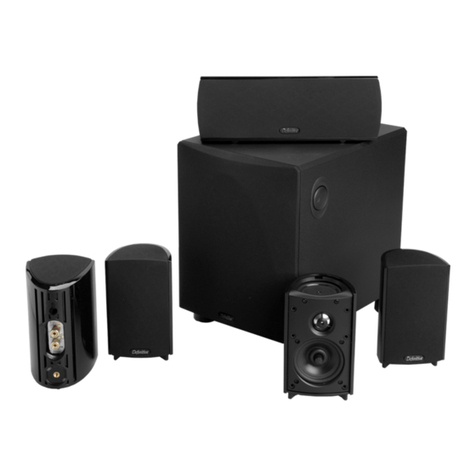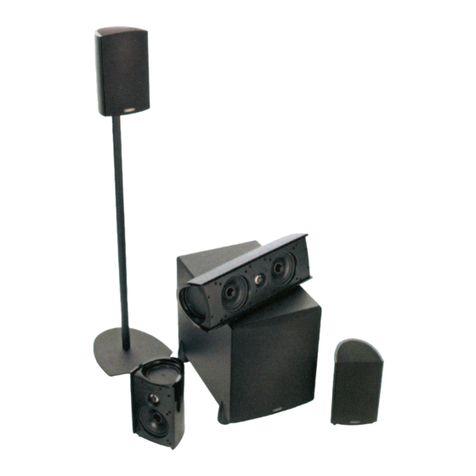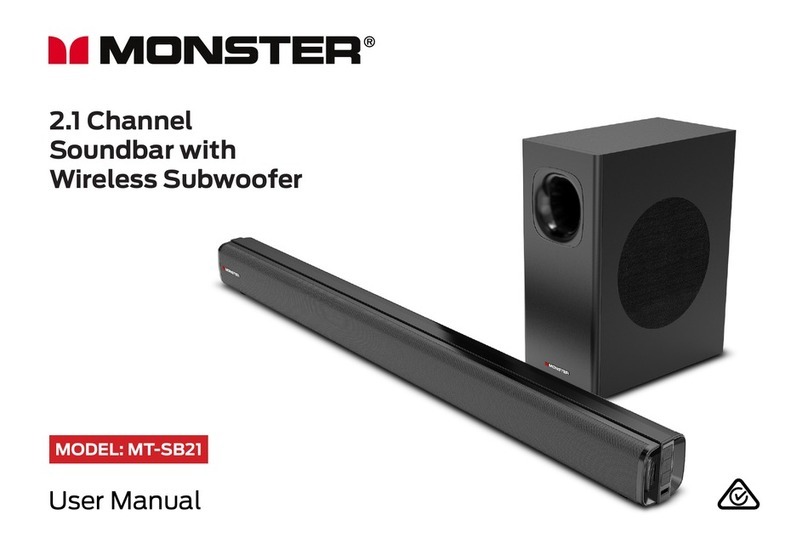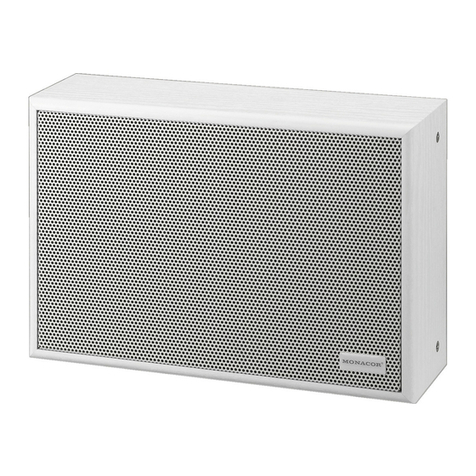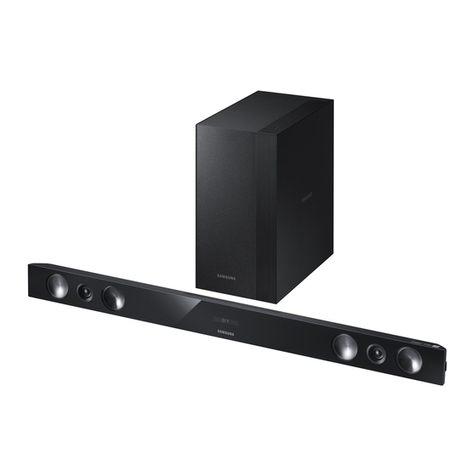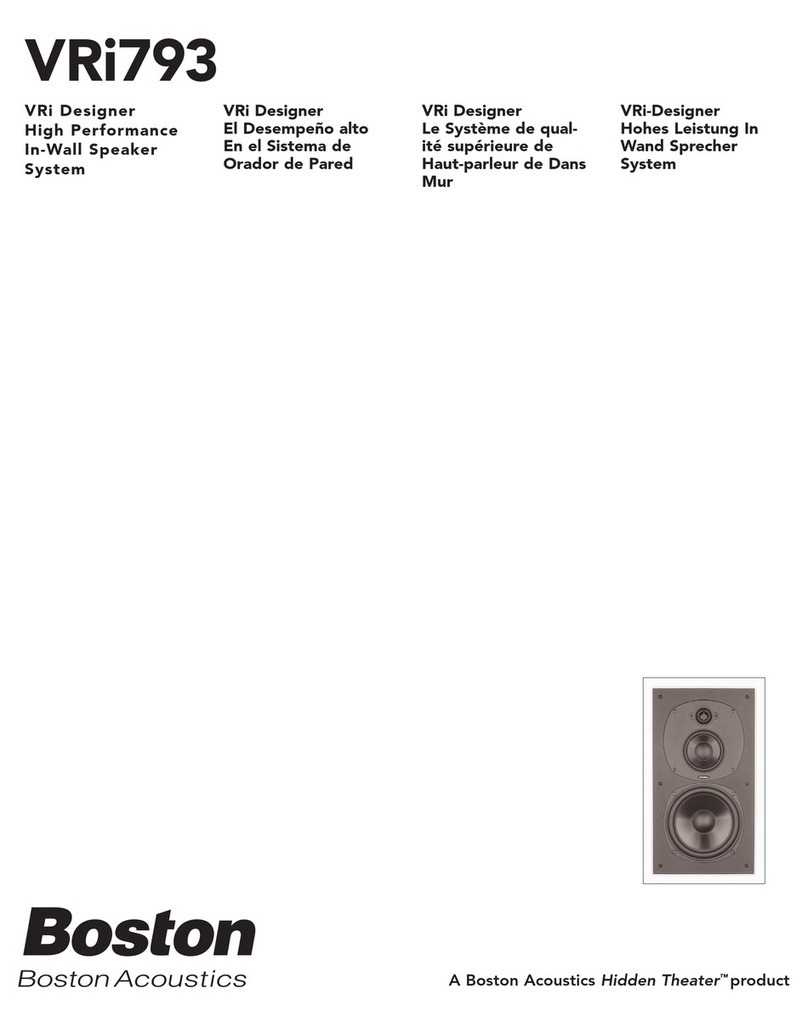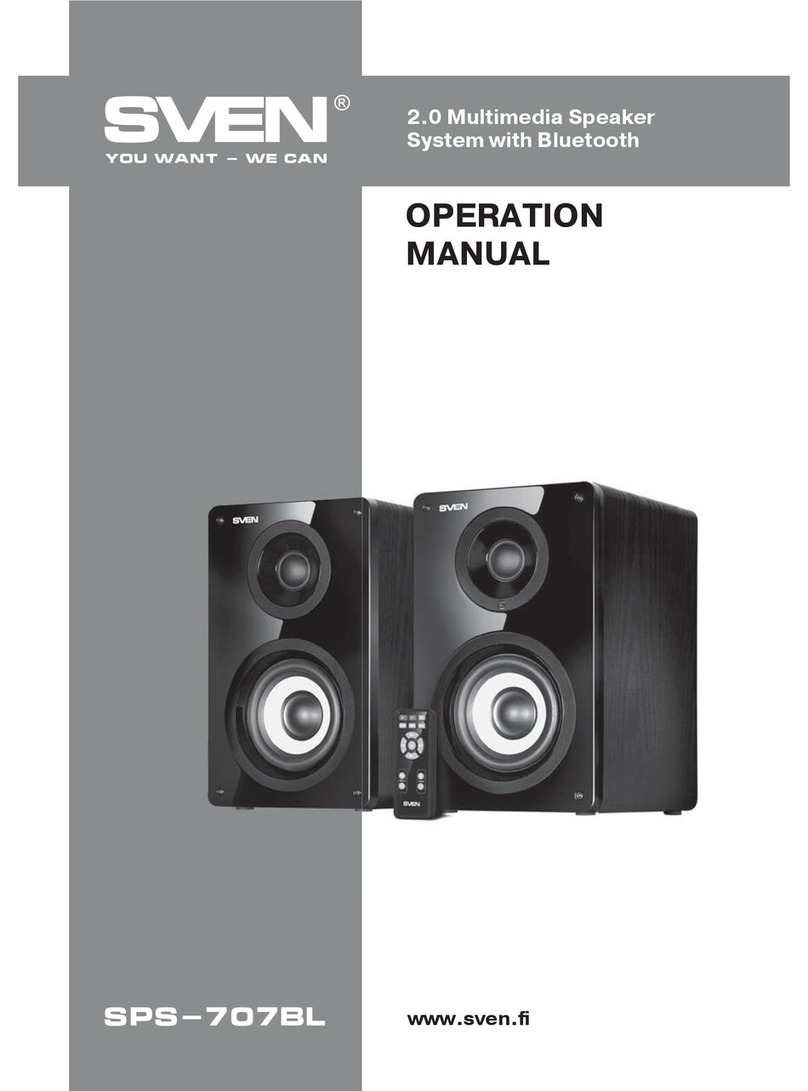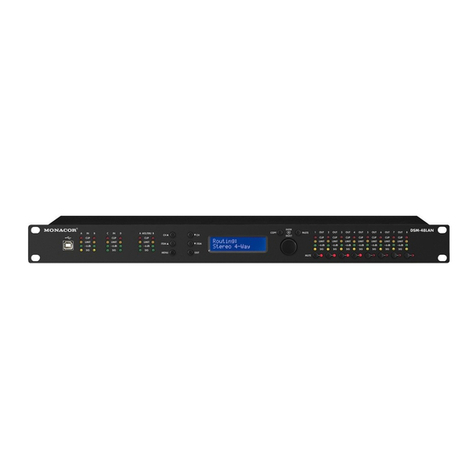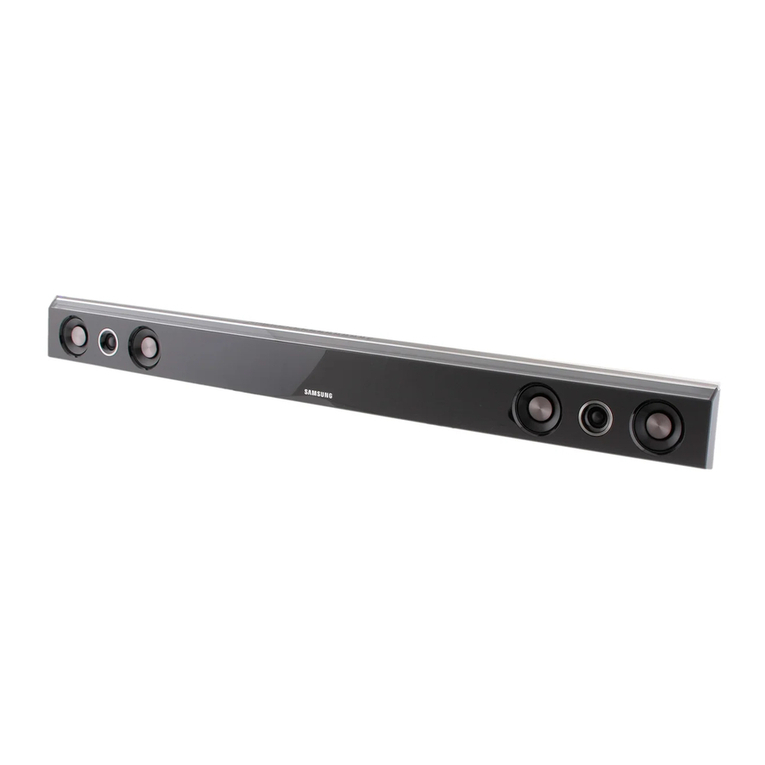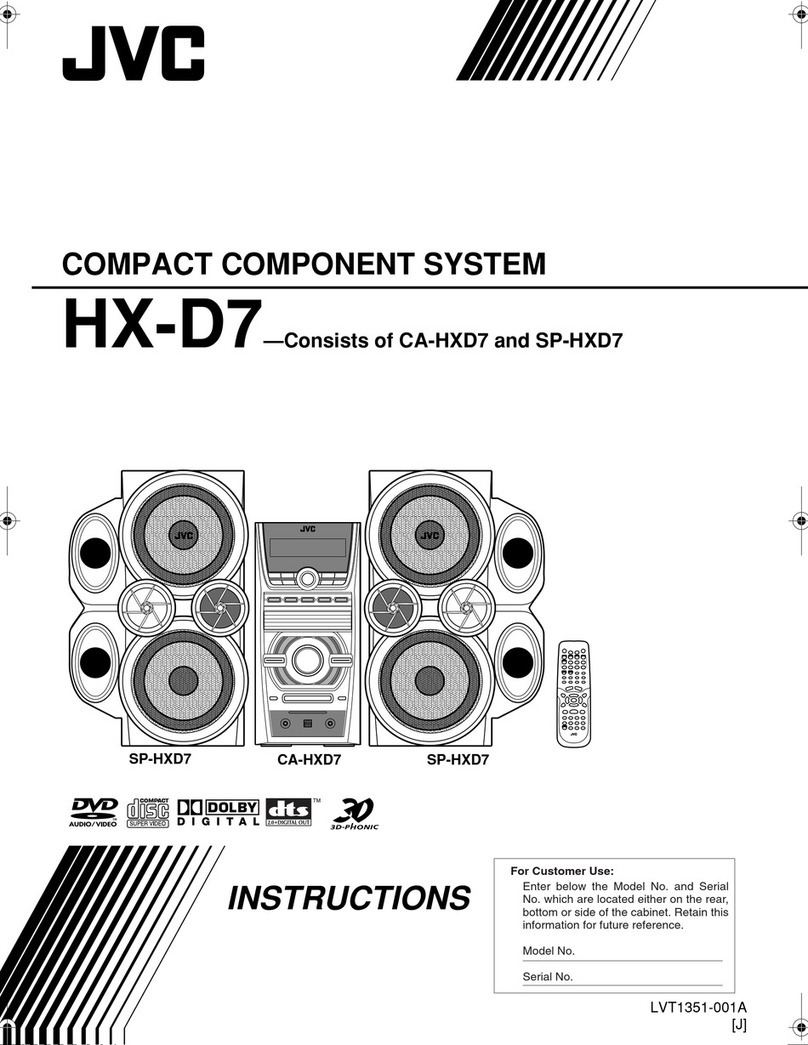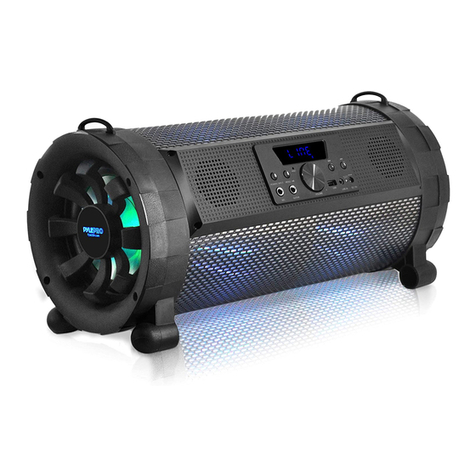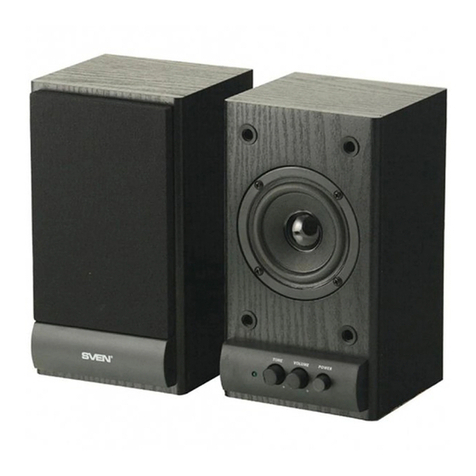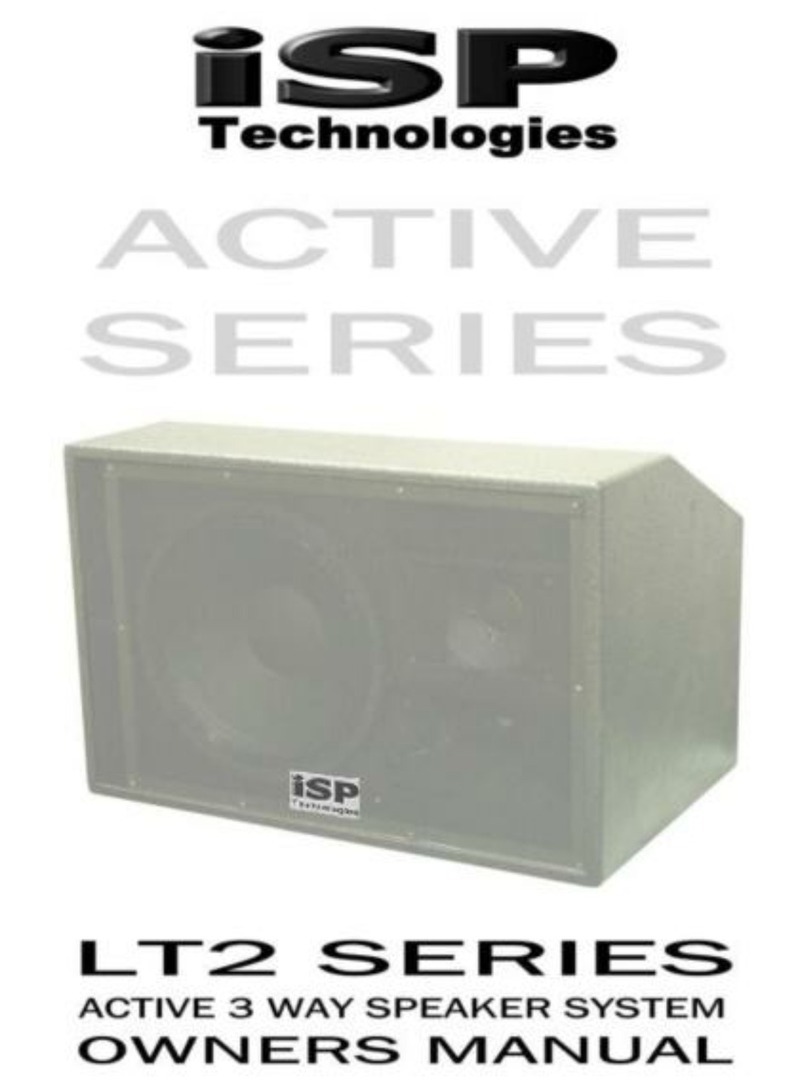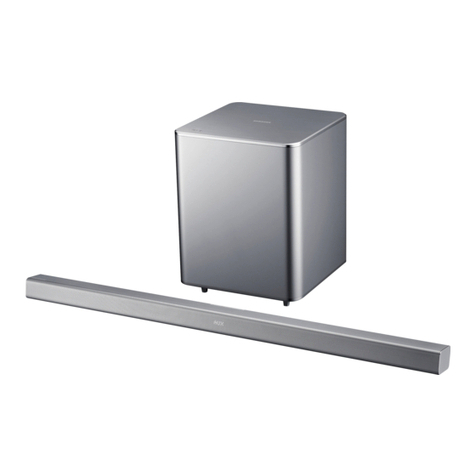
concert hall acoustic. And organ aficionados
take note! Antarctica becomes a completely dif-
ferent kettle of penguins when the organ can be
felt as well as heard.
On a cappella discs like Laurel Masse’s
Feather & Bone [Premonition 7-90751], record-
ed at the Troy Savings Bank Music Hall in New
York, the wave-like reverberations of the voice
within the cavernous space were even more
compellingly reproduced. Here the drier detail-
ing of the typical small speaker is soothed by
the balm of low frequency information. Edgar
Meyer’s acoustic string bass on “1A”
[Appalachian Journey; SS66782 SACD] exhib-
ited more sustained fundamentals; the thunder-
ous bass drum beats in Copland’s Fanfare For
the Common Man [Minnesota/Oue; Reference
Recordings RR-93CD] rippled through the room
a second longer; on numerous rock ‘n’ roll
recordings, there was a more satisfying relation-
ship between the exchange of kick drum and
bass guitar. Though the PowerMonitor 700 isn’t
ruler-flat throughout the upper bass and lower
mids, perfectionists can adjust gain on the back
of the 700s to compensate.
5.1-Channel—
PowerMonitor Style!
Even the smallest intelligently designed 5.1-
channel home-theater-in-a-box will impart the
gist of a good DVD soundtrack. The 700s are a
wakeup call to those who equate the detail they
perceive through five channels with soundspace
envelopment. One of the advantages of the array
of powered woofers in the LCRs is how they
acoustically interact to smooth the response into
the room, yielding a more immersive and natu-
ral sound. The prodigious lower frequency ener-
gy that radiates from each channel creates a
soundspace around the listener as tightly woven
as a needlepoint rug. I sensed a continuous 360-
degree soundfield around me. An example is the
swirling sequence of helicopters from Spy Game
where the turbulent wake from multiple rotors
doesn’t appreciably change in tonality or pulsat-
ing energy as it moves into the rear channels.
Similarly the rumble and hum of the electric
chair’s transformers during the execution scene
in Monster’s Ball was extraordinary for the
room-wide pressurization.
The highly dynamic C/L/R 2500 was an ideal
tonal match for the 700s. Dialogue was clean,
highly intelligible, yet natural-sounding. Unlike
many center channels the C/L/R 2500 seemed
refreshingly non-aggressive and free of edginess
through the broader midband. Nonetheless,
every nuance in Billy Bob Thornton’s funereal
narration from The Man Who Wasn’t There was
captured in all its chesty, crackling detail.
So prodigious is the PowerMonitor 700’s bass
output that you might ask (as I did), exactly
what is the point to adding a sub? But take my
advice—you’re going to want the control and
mid-20Hz extension of the SuperCube. It’s that
good. Case in point: Superbit DVD of
Desperado. In the barroom scene early in the
film, where Steve Buscemi tells a tale of may-
hem instigated by a mysterious stranger bearing
a unique “guitar case,” the score of subsequent
gunshots reveal both the exceptional dynamics
and extension of the 700s as well as their sym-
biotic relationship with the SuperCube. Since
the 700s are meant to be
configured by the proces-
sor as large speakers, I
listened to them initially
without the SuperCube.
As with my two-channel
listening, they achieved
precise localization and
deep, dynamic extension.
Reinserting the
SuperCube did not skew
the soundstage presentation or add any overhang
artifacts. Speed was maintained. What it did do
was provide a deeper, more complex layer of
reverberation that anchored each gunshot and
extended its impact a few fractions of a second.
It was like adding thrust to a rocket, or nitrous-
oxide to a street racer’s engine.
The Fast and the Furious provides a sonic
obstacle course like few other recent sound-
tracks. It will mercilessly road test every param-
eter of a 5.1 system. During the initial street
race, soundfields whipsaw front to rear in con-
cert with the camera’s point of view. Panned
sound cues, like a dashboard-mounted radar-
detector’s bleeps, move seamlessly from the
center to the right
channel. The BPX
surround speakers
provided a balanced
combination of direct
information and
immersion. When the
engine roar and
exhaust noise from
the street racers
moved from front to
back, the audible
character or “voice”
of the racer didn’t
lose its dynamism or
change tonality. The
system scaled sonic
images equally
through the listening
space. Maintaining
this dimensional real-
ity is crucial to the
multichannel experi-
ence, and the BPX did not come up wanting. In
contrast, a pure dipole surround tends to add an
even greater ambient effect; however, if multi-
channel music and cinema are in your game
plan, the Definitive has your number with the
BPX. With my multichannel music bias, I would
also strongly consider going PowerMonitor 700
across the back for the ultimate in timbre-
matching.
Conclusion
The PowerMonitor System was imperturbable
at any rational or irrational volume level. Its
character didn’t change; it never sounded ragged
or bloated. Its ability to stand up to the most
serious thrashing I’ve personally heaped upon a
speaker in some time demonstrates the effec-
tiveness of the PowerMonitor’s design and con-
trol. Its characteristic sound didn’t suffer at even
the most absurd levels; except for a little lower-
treble glare, it didn’t bloat or tizz or otherwise
devolve into incoherency. It just kept playing
louder and louder!
With the Snell Acoustics K.5mk2 and now
the Definitive PowerMonitor 700, it has been
my fortune over the past two issues to experi-
ence two exceptional multichannel systems in a
similar price range. The Snell Acoustics will
electrify aficionados with its musical finesse,
transparency, and near ruler-flat neutrality. The
Definitive Technology breathes new life into the
time-worn expression, “Now you’re playing
with power.” It isn’t cowed by any soundtrack.
And that make is one of the most dynamic,
compelling, and visceral compact 5.1-channel
loudspeaker systems I’ve ever experienced.
“Definitive Technology has had success
getting convincing bass extension from a
small speaker, but never more than with the
PowerMonitor 700 multichannel system—
loudspeakers that turn what once seemed
like a parlor trick into a near art form.”
11433 Cronridge Dr. • Owings Mills, MD 21117 • (410)363-7148
www.definitivetech.com
Flexibility, extension, and affordability -- it doesn't get much better
than this. With reach down to the mid-20Hz range, and unflappable
behavior at extreme volumes, this 14" cube with its single 10"
woofer and dual 10" passive radiators mixes the precision of a
sealed-box sub with the additional oomph of
a ported enclosure. The 1500-watt amplifier
guarantees that current flow will remain
unimpeded. With speaker and line-level
inputs and outputs, variable high/low-pass
filtering, and phase alignment, the 60-pound
SuperCube does what every subwoofer
should do it performs subliminally.
Definitive Technology
SuperCube I
“it doesn’t get much better than this”
